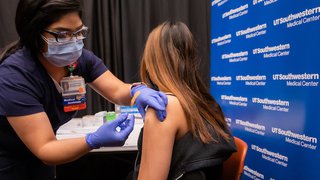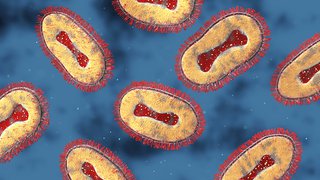
Heart attack symptoms should be considered an emergency under any circumstance – you can’t take chances with the hardest working muscle in your body.
In the ER, we can quickly assess the damage, potentially stop the heart attack, and save your life, whether you are experiencing unstable angina or having heart attack from a blocked artery.
Waiting to seek emergency care, however, can have a range of dire consequences. Among them is a complex condition called acquired ventricular septal defect (VSD) – a tear in the heart that is fatal for 25% of patients within 24 hours of when it forms.
The insidious hole, also known as a ventricular septal rupture (VSR), affects approximately 1 in 1,000 patients who don’t seek care within a week of experiencing heart attack symptoms. Nearly all those patients (97%) die within a year if they don't receive care for this condition.
But there is hope for lifesaving treatment. If a patient can get to an academic medical center quickly, or at least within two weeks after a heart attack, we can potentially repair the rupture with percutaneous VSD closure – an advanced, catheter-based alternative to open heart surgery. William P. Clements Jr. University Hospital is one of fewer than 10 Texas hospitals that offer this advanced procedure.
A hole in the heart
A congenital VSD – a hole in the heart that’s present at birth – will typically close on its own, requiring surgery only if it causes blood-flow problems or related conditions.
A hole that forms during a heart attack (acquired VSD) is often fatal. These holes can form when the heart starves for blood and it begins to weaken and die. A rupture in the septum, the tissue between the heart’s pumping chambers, will almost always leak blood, further weakening the heart. Within several weeks, the affected heart muscle turns to scar tissue, which can cause heart failure or lead to death.

COVID-19 and heart attacks: Don't tough it out
During the pandemic, too many people have been reluctant to seek care for heart attack symptoms.
Though acquired VSDs can happen to any patient after heart attack, higher risk groups include women, seniors, and patients with high blood pressure or chronic kidney disease. Symptoms may include bluish skin, lips, and fingernails, labored breathing, sweating, and extreme fatigue.
VSDs can often be avoided if patients go to the ER as soon as they detect heart attack symptoms. Without monitoring, a VSD can form and the patient's health will rapidly decline, resulting in advanced heart failure within a few months.
Open heart surgery for VSD can be risky – VSDs are not perfect holes, and suturing the affected tissue is like sewing through butter. If stitches can't hold, we can't do open heart surgery. With percutaneous VSD closure, we guide a catheter from the groin to the heart and insert a small, permanent device to close the VSD.
Both procedures are complex, with a 50% mortality rate for open heart surgery and a 30% mortality rate for percutaneous VSD closure. By comparison, most open-heart procedures register a 1% mortality risk.
Hurry to admit, wait to operate
Treating VSD percutaneously requires a "hurry up and wait" strategy. If we operate too soon, we risk making the VSD larger. If we wait too long, the patient's health may decline too much to save the heart. Expertise is required to carefully time the performance of the procedure, which balances delicacy with a certain amount of force.
A January 2020 study found that operating within seven days of a heart attack resulted in a 54.1% mortality rate in patients with hemodynamic compromise, or inability of the heart to pump enough blood. Operating after seven days dropped the death rate to 18.4%.
If we operate too soon, the hole could expand larger than the closure device that we are attempting to close the hole with, ultimately causing more damage. We’ll monitor you closely during this time until the VSD appears to be done expanding.
In some patients it can take up to three weeks for the tissue around the VSD to become stiff enough to anchor the surgical sutures. But waiting also takes a toll on the patient's health. In some cases, kidney function decreases due to low blood flow. The patient may need dialysis to keep fluid off their kidneys or lungs, and mechanical support to maintain heart function, such as a balloon pump.
Suffice it to say, the monitoring process is a delicate balance that requires sharp clinical judgment – we wait to operate until we cannot wait any longer.
Closing the VSD
We first determine the precise size and location of the VSD using images of the heart taken from outside the chest (transthoracic echocardiogram) and from inside the throat (transesophageal echocardiogram). These images help us map the route to the heart.
Most catheter procedures stay within the vein system or the artery system. To navigate the complicated logistics of VSD, we must create an arteriovenous (A/V) loop in which we access both. Under imaging, it looks as if we’re flossing the heart with the wire/catheter. The long loop provides a rail that makes it possible to insert and place the closure device.
This complex procedure takes approximately four hours and one to two surgeons. First, we make a small puncture in the patient's groin to access the femoral artery. Then, the surgeon inserts a catheter that holds a long wire and a device called a Post-Infarct Muscular VSD Occluder. It resembles a mesh disk when compressed inside the catheter.
Attached to one side of the device is a retractable cord. The surgeons use real-time imaging to carefully thread a wire into the left ventricle of the heart, enter the VSD, and cross the catheter into the right ventricle. Then, we snare the wire and slowly pull it through the exit vein in the leg, completing the flossing path.
Positioning the device is the most challenging part of the procedure. If we’re even a millimeter off, we may need to start over. Once the device is in position, we carefully expand the left side of the device and pull it toward the VSD.
When fully expanded, the device looks like an irregular dumbbell, with the "weights" inside each of the ventricles and the bar between. After each side is placed, we release the cable and slowly remove the catheter and wires.
The device remains in the heart permanently. Over time, the device will become incorporated into the heart tissue inside the ventricles to seal the hole. Then begins the long road to recovery.
VSD repair requires a lengthy recovery
For every day a patient is sedentary with illness, it takes approximately a week to regain lost strength. This could mean several months of recovery for the patient after they have been discharged from the hospital.
So, after the VSD closure, patients must diligently perform physical therapy to rebuild their muscles and improve their nutrition.
UT Southwestern offers a strong Cardiac Rehabilitation program to help patients recover after heart surgery or heart failure. The dietitians, physical therapists, and other specialists track the patient's progress, helping them grow stronger and reduce their risk of future heart problems.
Percutaneous VSD closure is a complex, major procedure – and a lengthy, strenuous experience that can be avoided. Please go to the emergency room at that first sign of heart attack. There is no reason to wait when your life is at stake.
To visit with a cardiologist, call 214-645-8000 or request an appointment online.











